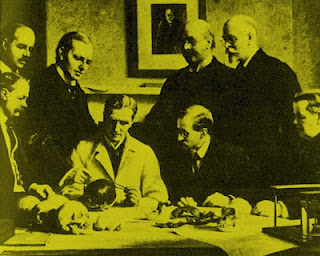Force-Fit Fossil Face Finds
Whenever there is a new discovery of fossils or bones, evolution's cheerleaders attempt to shove the data into their preconceptions and make it fit their worldview. Although the data are better interpreted in other ways, the evolutionists publish their "findings" (that is, their stories) and people believe what "real" scientists say. In this case, pieces of fossil face bones must be evolutionary ancestors of humans. Right? No chance that they show variety in humans instead?
You can read the rest of "New African Fossil Confirms Early Human Variations", here.The cover of the August 9, 2012 issue of the journal Nature featured the reconstructed face of newly-discovered human-like fossil bones described by Meave Leakey and colleagues in their report. Three new human-like fossil face parts from Africa have given evolutionists another opportunity to reiterate their confusing philosophy, but the data don't match their story very well.What was their first task upon discovering the fossils? According to long-time African hominid fossil expert and anatomist Bernard Wood who summarized the Leakey finds in a short article in the same issue of Nature, "The task of palaeoanthropologists is to reconstruct the evolutionary history of the period between our species, Homo sapiens, and the ancestral species we share exclusively with chimpanzees and bonobos."So much for objective science, which would entail evaluating the fossils against evolutionary and competing tenets, not force-fitting them into evolutionary preconceptions. After all, a century of searching has failed to produce one fossil that can wear the undisputed tag of "ancestral species."
